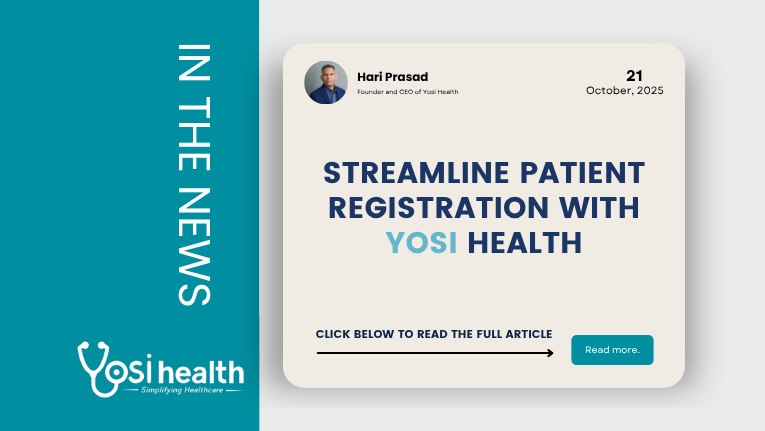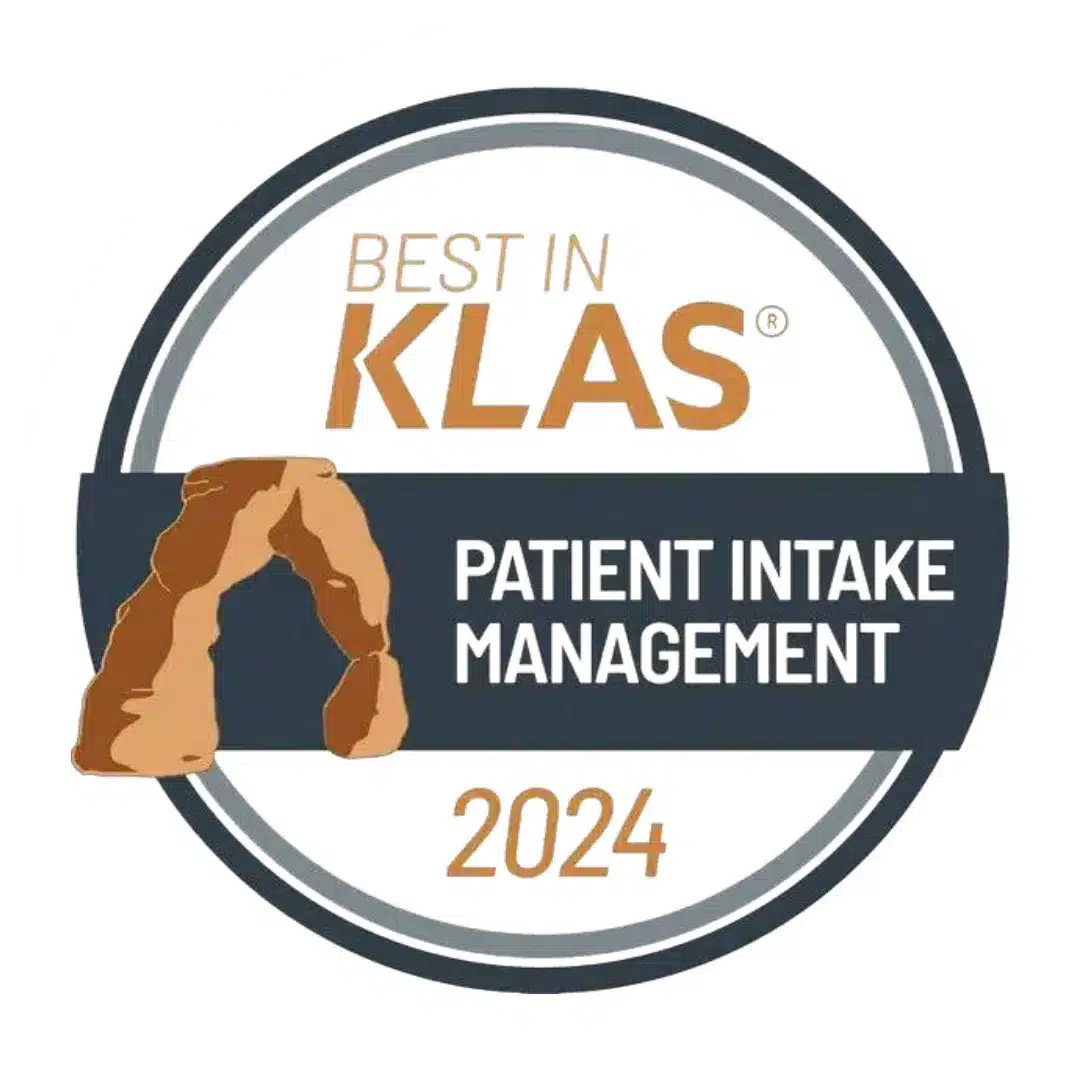
Streamline Patient Registration with Yosi Health
Learn how Yosi Health’s platform simplifies patient intake, reduces wait times, and enhances satisfaction through efficient digital processes.
Introduction
Long wait times and overwhelmed front desk staff have become a regular frustration for both healthcare providers and their patients. One of the key contributors to this problem is a slow registration process. Whether it’s a long line of first-time visitors or return patients filling out the same forms again and again, delays at check-in directly impact how smoothly the rest of the visit goes.
Better patient intake is often the missing piece in the registration puzzle. When paperwork piles up or staff spend more time collecting data than providing care, the quality of the visit drops. Patients feel rushed or neglected, and providers feel like they’re always playing catch-up. Recognizing how registration influences the entire workflow is the first step in turning things around.
Understanding the Problem
Slow registration doesn’t always boil down to how many patients arrive at one time. A good chunk of the delay comes from how information is collected and processed. Many practices still rely on paper forms and manual input, which opens the door to data entry mistakes and makes it harder to access patient info quickly when it’s needed.
Common causes of slow patient registration include:
1. Manual data entry, which eats up time and increases errors
2. Repetitive form-filling for patients, especially ones who’ve visited before
3. Lack of patient education on what documents or information are needed ahead of time
4. Systems that don’t talk to each other, forcing staff to jump between platforms
When these problems stack up, patients wait longer to be seen, and office schedules start slipping. Staff might feel pressure to move faster, which creates more room for mistakes. Even minor delays early in the process can throw the entire flow of the day off balance. If registration feels like a bottleneck, chances are the rest of the visit doesn’t feel smooth either.
Instead of kicking off the patient experience on a strong note, many practices end up starting every appointment under stress. Providers try to squeeze more into already tight schedules while patients sit in waiting rooms frustrated, watching the clock. It’s a recipe for burnout on both sides.
Streamlining Patient Intake With Technology
When practices shift from paper forms and outdated systems to cloud-based tools, the difference is noticeable fast. A digital patient intake process reduces manual back-and-forth and gives staff a head start before patients even arrive. Pre-visit forms can be completed online, which helps collect information early and sort it where it needs to go right away.
Some helpful tools include:
1. Online check-ins, so patients can skip the clipboard
2. Automated demographic and insurance capture
3. Secure cloud storage that allows staff to easily access records across devices
4. Integration between scheduling, billing, and intake systems
These upgrades help reduce the burden on both front desk staff and patients. Filling out forms at home is more comfortable than doing it in a packed waiting room. With less time spent at check-in, patients get seen quicker and staff can avoid the traffic jam at the front desk.
Picture a parent bringing in their child after school. With digital intake, they can complete all the forms over lunch. By the time they arrive, everything’s already in the system. The front desk confirms a few details and they’re ready to go. It feels less like a delay and more like what a visit should be.
It also builds trust. A smooth and quick start shows respect for the patient’s time and their healthcare needs right from the beginning. That kind of experience stays with people and shapes how they feel about returning to your office.
Implementing Best Practices
Rolling out a new system works best when the entire team is on board. No matter how great the software is, your practice needs staff who feel confident using it. That comes from thoughtful training that fits daily operations. Start small. Simple changes make a real impact and let your team adapt comfortably over time.
Clear communication with patients matters just as much. A quick line in appointment reminders, a short check-in script, or a follow-up text explaining the digital tools can help patients know what to expect. If patients understand that digital intake means shorter waits and more face time with their providers, they’re more likely to cooperate.
Simple ways to boost success with digital intake:
1. Host short, regular training sessions for staff to boost comfort
2. Include notes about digital intake in appointment confirmation messages
3. Post easy-to-follow, visual step-by-step guides on your site
4. Keep paper backup processes as an option when needed
5. Schedule weekly team check-ins during rollout to troubleshoot issues
Every practice is different, so flexibility is key. Some need more training time, others need added support for specific patient groups. What matters is creating steps your team can follow daily without added confusion. When that happens, things really start to run smoother.
Enhancing Patient Experience
A quick, easy patient intake can instantly improve the tone of a visit. When people walk in and see that things are running on time, it sets a positive tone. If they’re not drowning in paperwork after a long drive, they’re more likely to feel calm and ready to focus on why they came in.
Digital intake also gives front desk staff room to look up, smile, and talk. Instead of being locked into screens or piles of forms, they have time to greet patients properly, check details quickly, and build a connection. That kind of interaction helps patients feel seen and respected.
Real-time updates also make a big difference. Waiting in silence when a doctor is running behind adds to anxiety. A quick text update gives patients peace of mind. If something is missing from their form, a message gives them the chance to fix it before arriving. That keeps visits more organized and lowers stress on both sides.
Consider a senior coming back for a follow-up. With their digital forms already reviewed, they’re not answering the same questions for the third time. The provider walks in prepared, focused on recovery, and ready to help. That kind of visit feels personal, smooth, and thoughtful.
Fast intake isn’t about rushing people through the door. It’s about clearing out the clutter so every moment at your practice feels more intentional and helpful.
Improving Your Practice’s Workflow with Yosi Health
Giving attention to slow patient registration can completely change your daily workflow. Switching to tools that support a smoother patient intake process frees up time and energy across your team. Front desk staff can put their focus on patients, not paperwork. Providers can stay on schedule instead of making up for delays.
When processes move faster, appointments feel calmer and more organized from start to finish. That doesn’t just make work easier. It improves the overall patient experience too. Your office becomes a space that respects time and makes visits smoother for everyone involved.
Yosi Health offers the kind of solutions that support this shift. By making intake smarter through automation and digital systems, we help your practice run better every day. From check-in to follow-up, trusting the right tools helps you focus more on care and less on waiting lines.
Improving how your office runs and making every patient interaction smoother starts with small changes. Explore how a smart approach to patient intake can make a big difference. Yosi Health is ready to help you simplify your workflow and create a better experience for everyone who walks through your door.ng together in one place, making it easier for your team to stay on track while giving patients a faster, more reliable check-in experience.


